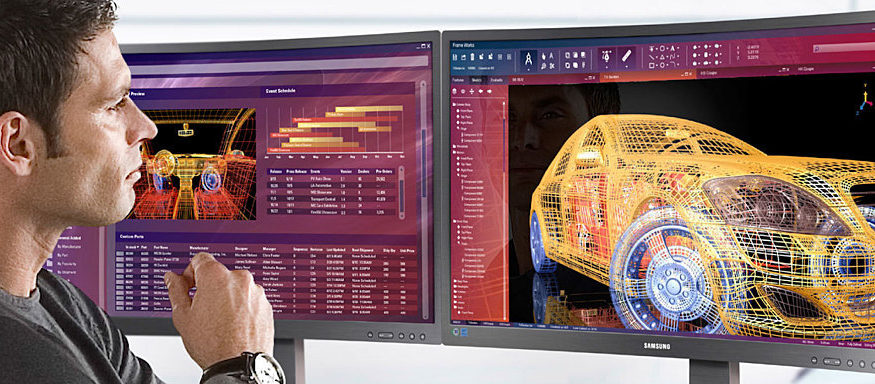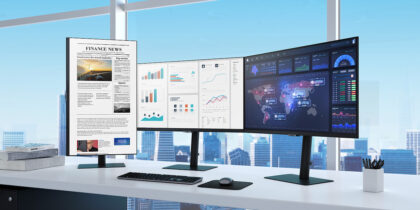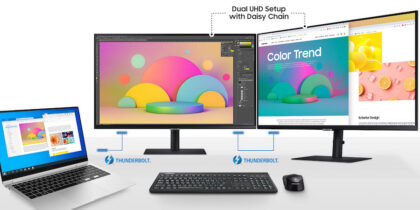With the decline of desktop computers and the rise of mobile PCs, you might expect to see the dual monitor trend fading, but the need for multiple monitors is growing, along with the need to improve employee productivity and comfort.
Monitor sales of $179 million in 2011 far outpaced PC sales of about $130 million, which suggests that many people were buying more than one display for their new PCs. It’s no surprise: A study by the University of Utah found multi-screen desktop configurations to be “significantly more useful” and “preferred on every measure of usability” when compared to single-screen setups.
One Canadian hospital found that the 20 clinical coders in its Archiving Records Department entered records between 1.5-3 minutes faster with dual monitor usage, saving almost $6,000 per year in payroll, overtime and other labor-related costs.
Dual Monitors Linked to Better Productivity and Better Health
Besides boosting productivity, dual monitor setups help reduce employee healthcare costs. Toggling back and forth between programs by clicking a mouse can contribute to carpal tunnel and repetitive strain, which accounts for some 20-30 percent of new workers’ compensation claims, according to the U.S. Department of Labor.
For many, screen use is integral to the work experience. During that screen-intensive time, a dual monitor can allow for enhanced productivity, for example by enabling a worker to reference an email on one screen while working on a related document on another.
Multiple Monitors in a Mobile World
See how the mobile workforce can gain productivity and health benefits from multiple displays. Download Now
In fact, productivity enhancements are key to the preference for the dual screen. Spreadsheets, for instance, can be displayed across the full display, alleviating the need to scroll back and forth in order to see all the columns. Screens can be shared with customers or colleagues for simplified collaboration. Dual monitors also reduce the need to toggle between applications, making workers more efficient as they juggle tasks across multiple programs.
These gains are more than merely theoretical. University of Utah researchers found that using dual-screen monitors resulted in 33 percent fewer errors, 16 percent faster edits and 6 percent quicker access to tasks.
Recent software advances have been designed specifically to take advantage of the dual screen environment. Productivity tools in the Microsoft office suite, for instance, enable effective dual-screen workflows in PowerPoint and Excel.
Workplace monitor needs will vary depending on the individual and the work at hand. Some workers might prefer a particular screen size or may have other specific configuration needs. While there are many variables in play, it’s clear that in the aggregate, a dual monitor may offer certain advantages. In particular, a multi-monitor configuration offers the ability to work more effectively and comfortably, thus allowing employees to be more productive on the job.
Whether for basic office use, data analysis or editing code, multiple monitors help to get the job done efficiently and comfortably, with maximum employee productivity.







